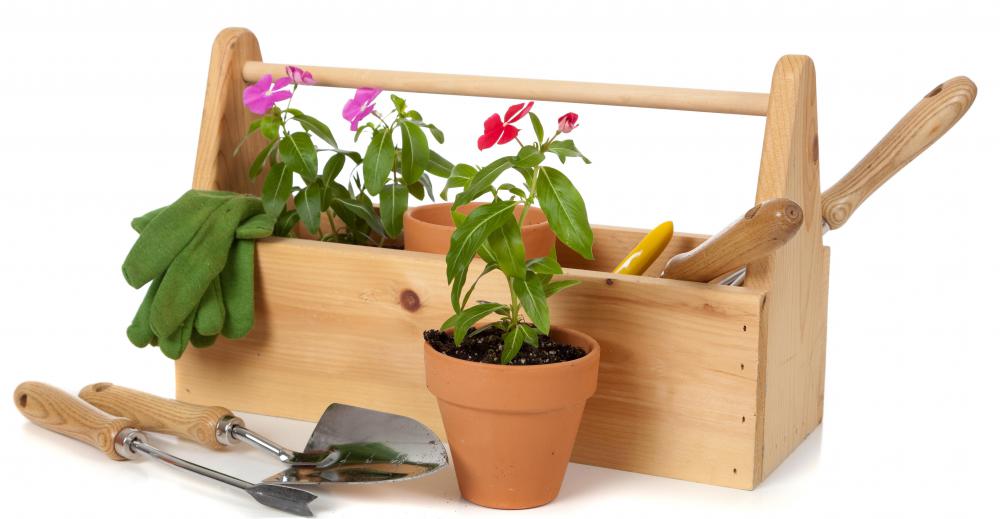At WiseGEEK, we're committed to delivering accurate, trustworthy information. Our expert-authored content is rigorously fact-checked and sourced from credible authorities. Discover how we uphold the highest standards in providing you with reliable knowledge.
Can You Use USDA Zones Around the World?
The short answer to this question is yes, but a bit of work is involved. United States Department of Agriculture Hardiness Zones, referred to as USDA zones, were designed for North America, and the USDA only officially publishes zone maps for North America. However, many nations have developed similar hardiness zone systems with the same numbering system, making it possible to generalize USDA zone references on plants and in gardening books to other parts of the world. Some avid gardeners have also developed gardening maps for their own regions which have been classified by USDA zone.
The idea behind USDA zones is that it is possible to divide any given area of the world by average minimum temperature to come up with “hardiness zones” where plants will thrive. Zones with a high number are warm, while zones with a low number are cold. When someone says that a plant is “hardy in USDA zone five,” for example, it means that it can handle very cool winter weather, whereas a plant which only grows in USDA zones 10 and 11 would not be able to survive in zone five.

If you consider average minimum temperatures to be the only matter of importance, you can use USDA zones around the world. If you garden in Namibia, for example, you can look up the average minimum temperature in your community and then find the USDA zone which corresponds with that temperature. Plants which are said to grow in that zone could theoretically grow in your garden as well.

However, because the USDA zones look at average minimum temperatures, they often miss summer temperatures, which are key. Regions with the same average minimum temperature might have summer temperatures which vary, so plants which thrive in, say, Michigan, won't grow in England. Furthermore, USDA zones don't consider other important issues like annual rainfall, wind, soil conditions, and so forth, making them more of a rough guide than a hard and fast set of rules.
If you want to generalize USDA zones to your area, you're going to want to know which temperature averages correspond to which zones, so here they are:
| Zone 1 | Below -50 degrees Fahrenheit (-45.6 degrees Celsius) |
| Zone 2A | -50 to -45 degrees Fahrenheit (-42.8 to -45.5 degrees Celsius) |
| Zone 2B | -45 to -40 degrees Fahrenheit (-40 to -42.7 degrees Celsius) |
| Zone 3A | -40 to -35 degrees Fahrenheit (-37.3 to -39.9 degrees Celsius) |
| Zone 3B | -35 to -30 degrees Fahrenheit (-34.5 to -37.2 degrees Celsius) |
| Zone 4A | -30 to -25 degrees Fahrenheit (-31.7 to -34.4 degrees Celsius) |
| Zone 4B | -25 to -20 degrees Fahrenheit (-28.9 to -31.6 degrees Celsius) |
| Zone 5A | -20 to -15 degrees Fahrenheit (-26.2 to -28.8 degrees Celsius) |
| Zone 5B | -15 to -10 degrees Fahrenheit (-23.4 to -26.1 degrees Celsius) |
| Zone 6A | -10 to -5 degrees Fahrenheit (-20.6 to -23.3 degrees Celsius) |
| Zone 6B | -5 to 0 degrees Fahrenheit (-17.8 to -20.5 degrees Celsius) |
| Zone 7A | 0 to 5 degrees Fahrenheit (-15 to -17.7 degrees Celsius) |
| Zone 7B | 5 to 10 degrees Fahrenheit (-12.3 to -14.9 degrees Celsius) |
| Zone 8A | 10 to 15 degrees Fahrenheit (-9.5 to -12.2 degrees Celsius) |
| Zone 8B | 15 to 20 degrees Fahrenheit (-6.7 to -9.4 degrees Celsius) |
| Zone 9A | 20 to 25 degrees Fahrenheit (-3.9 to -6.6 degrees Celsius) |
| Zone 9B | 25 to 30 degrees Fahrenheit (-1.2 to -3.8 degrees Celsius) |
| Zone 10A | 30 to 35 degrees Fahrenheit (1.6 to -1.1 degrees Celsius) |
| Zone 10B | 35 to 40 degrees Fahrenheit (4.4 to 1.7 degrees Celsius) |
| Zone 11 | Above 40 degrees Fahrenheit (above 4.4 degrees Celsius) |
Happy gardening!
AS FEATURED ON:
AS FEATURED ON:












Discuss this Article
Post your comments